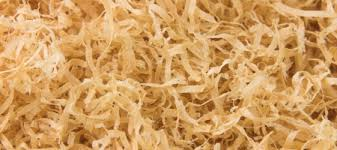Joshua Otaigbe’s research blends chemical engineering with materials structure and properties, most recently in trying to develop new and stronger composites that are sustainable and environmentally friendly.
The longtime National Science Foundation (NSF)-funded scientist, a professor in the University of Southern Mississippi’s school of polymers and high performance materials, is collaborating with researchers at Oregon State University on a new technology that uses natural wood fibers to reinforce plastic materials.
If successful, “it could revolutionize the composite industry,” especially manufacturing sectors that rely on these materials, such as building, construction, automobiles, and aircraft, he says.
Moreover, “wood fiber is renewable and based on agricultural products, and the composite materials we come up with would biodegrade after their service life without harming the environment,” he adds.
Greater use of wood fibers in producing composites also could be a boost to the paper industry by providing an important new use for wood pulp, since “paper is a raw material for our products,” he says. “We can extract wood fibers out of paper.”
NSF is funding the work through its structural materials and mechanics program of the division of civil, mechanical, and manufacturing innovation. Otaigbe is collaborating with John Nairn, the Richardson Chair in wood science and engineering at Oregon State University; the two researchers are sharing the grant.
Currently, the composite industry combines wood particles (not fibers) with polymers. The fiber is a lot stiffer and stronger than the wood particles, and provides the reinforcing capability for the plastic.
Using wood fibers instead of particles in the direct conversion of the polymer building blocks called monomers also allows manufacturers to eliminate the melting stage, which is when the materials are shaped, then later solidified into various products. With fibers in the polymer matrix.
The process under development involves taking the wood fibers, usually within paper, and placing them in a mold, then injecting a “reaction” mixture used to make the polymers.
Scientists then raise the temperature to 150 degrees Celsius -relatively low when compared to traditional melting methods- and the mixture forms a composite. The lower temperatures are important, since wood fibers tend to degrade at temperatures above 190 degrees Celsius.
Otaigbe has long worked on NSF-funded projects that combine polymer materials structure with chemical engineering, and also has been actively involved in university and industry research partnerships to try to solve complicated and multi-disciplinary problems.
Fonte: National Science Foundation












